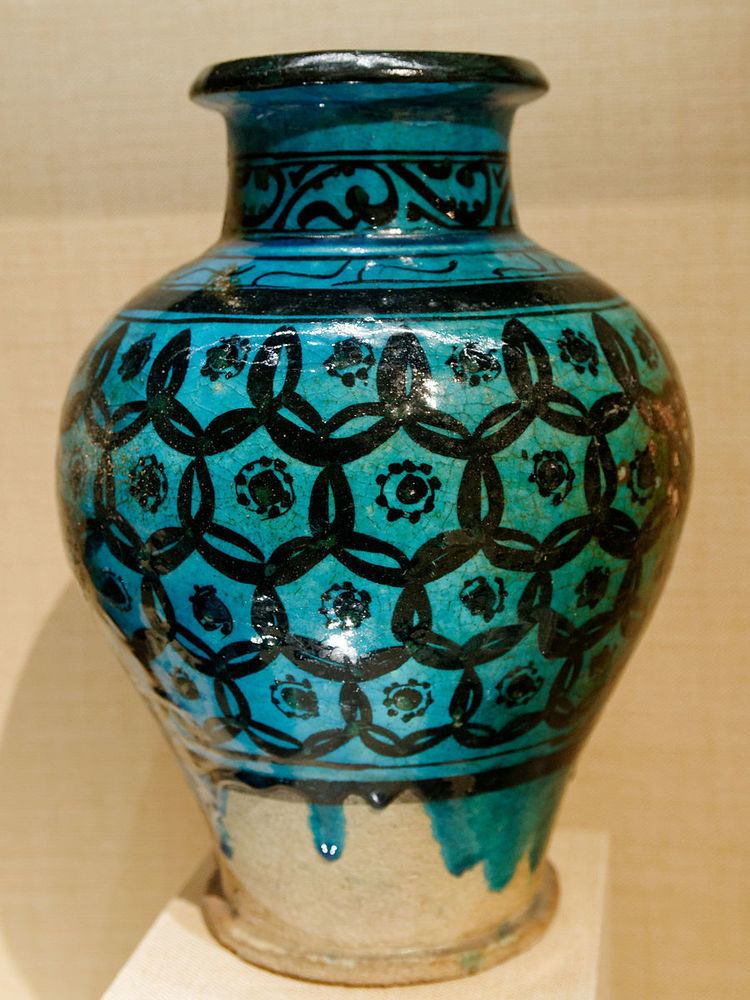 | ||
Raqqa or Rakka ware is a style of ceramic pottery that was a mainstay of the economy of Raqqa in northeastern Syria during the Ayyubid dynasty. The city experienced a resurgence during the late twelfth and early thirteenth centuries, but when it was sacked by the Mongols in 1259 and destroyed in 1265, manufacture of its ceramics virtually ceased.
Contents
Ceramics
Raqqa's ceramics were varied in character, but have been identified during the 20th century by on-site excavations that securely linked the highly sought-after surviving pieces to Raqqa. Over a heavily potted body of coarse stone-paste often covered with a white slip, monochrome and polychrome underglaze stains of copper (turquoise), cobalt (blue) or manganese (purplish-brown) were covered with a greenish clear glaze and fired. Lustreware was also developed at Raqqa, after the Fatimid collapse in Egypt (1171), which until then had been the only center of lustreware production.
Collections
Major collections are at the Metropolitan Museum of Art and the Ashmolean Museum.
